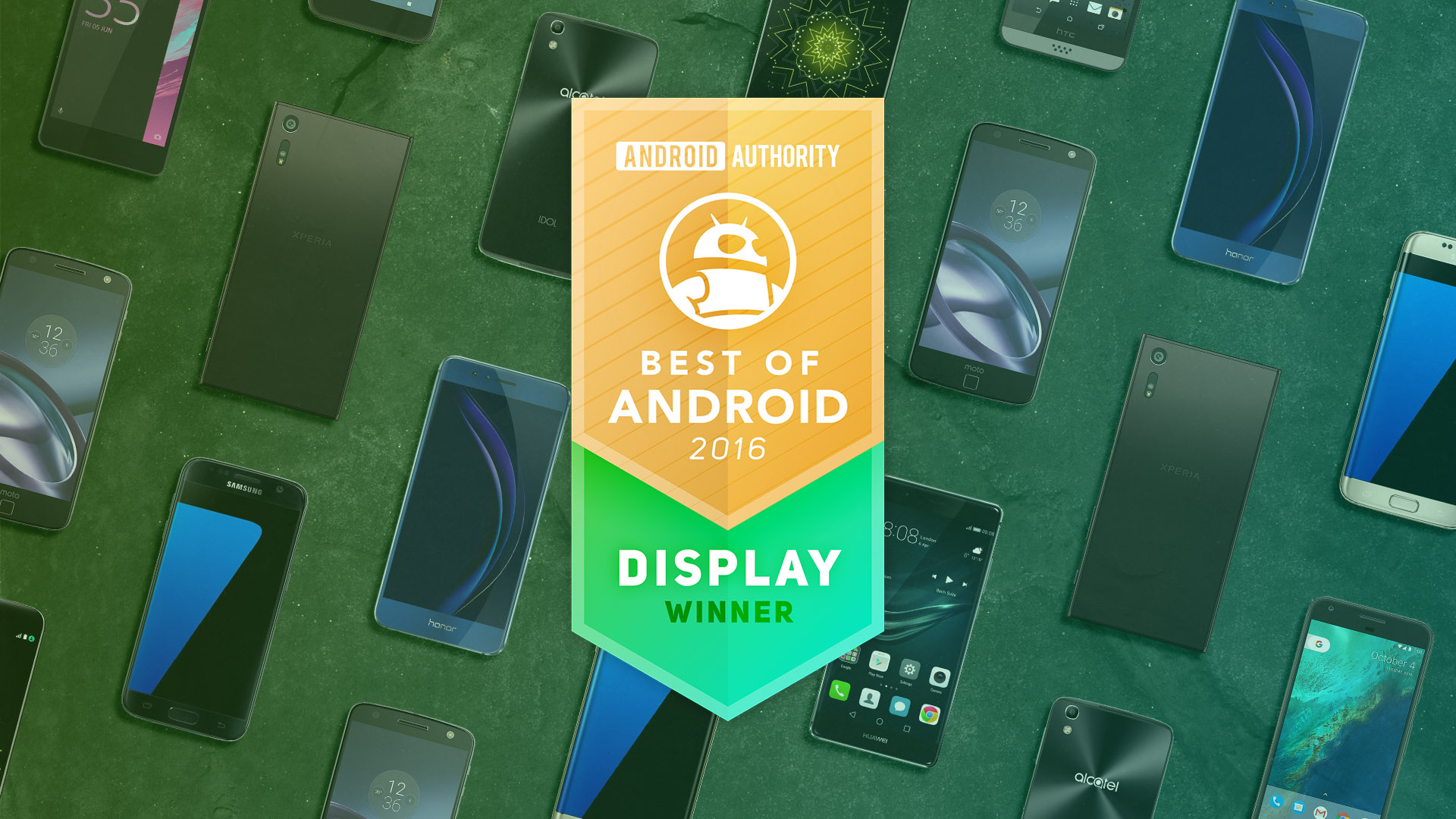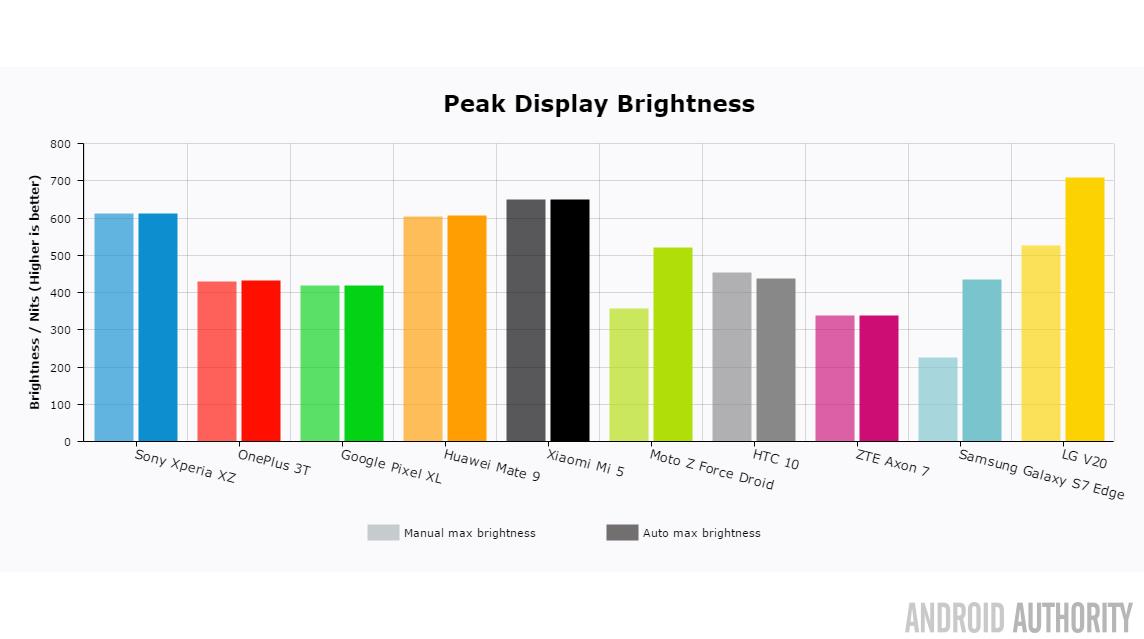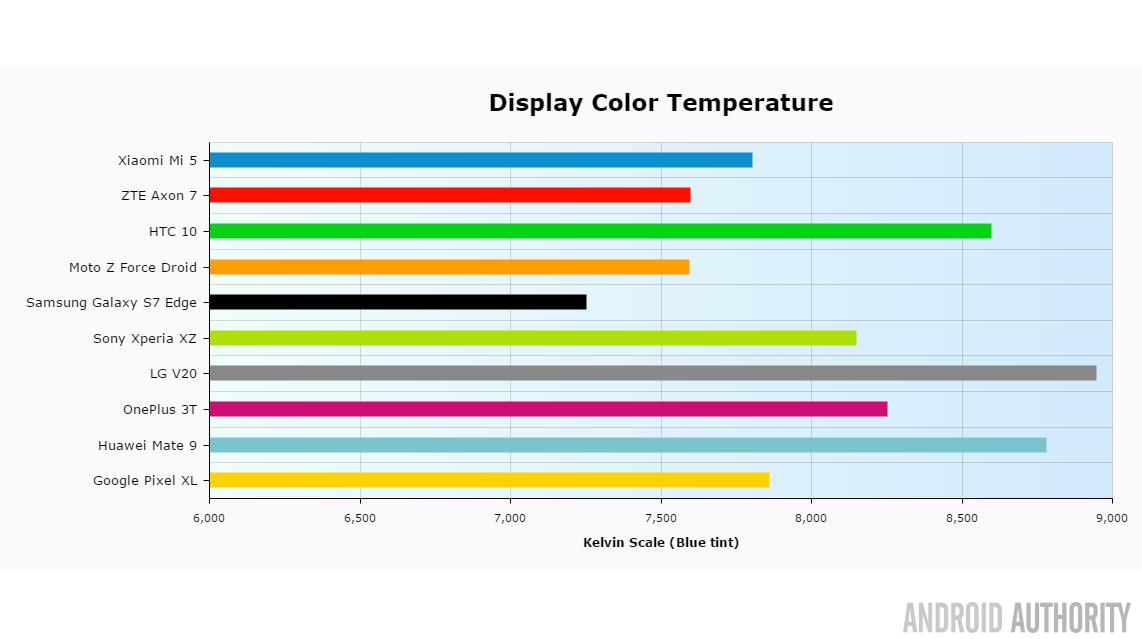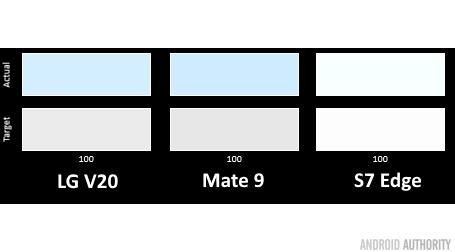Affiliate links on Android Authority may earn us a commission. Learn more.
Best of Android 2016: Display

What is Best of Android?
In Best of Android, we take the most important smartphones of the year and compare them side-by-side and in-depth. This year, with so many good phones available, we’ve stepped things up a notch and brought the 10 biggest Android phones of the year to the competition.
- Samsung Galaxy S7 Edge
- HTC 10
- Sony Xperia XZ
- Google Pixel XL
- Xiaomi Mi 5
- Lenovo Moto Z Force Droid
- OnePlus 3T
- LG V20
- HUAWEI Mate 9
- ZTE Axon 7
Read more about Best of Android and thanks for being such a valuable part of the Android Authority family!
To kick off our Best of Android 2016 series we are going to delve right on into every smartphone’s big upfront piece of tech – its display.
This year’s phones are a mixture of LCD and AMOLED and are either Full HD or QHD. Interestingly they are all over 5.0 inches with the smallest entrant being the Xiaomi Mi 5 with its 5.15 inch display. The largest is the 5.9 inch HUAWEI Mate 9.
| Size | Type | Resolution | Pixel density | |
|---|---|---|---|---|
Galaxy S7 Edge | Size 5.5-inches | Type AMOLED | Resolution 2560 x 1440 | Pixel density 534 ppi |
HTC 10 | Size 5.2-inches | Type Super LCD5 | Resolution 2560 x 1440 | Pixel density 565 ppi |
Sony Xperia XZ | Size 5.2-inches | Type IPS LCD | Resolution 1920 x 1080 | Pixel density 424 ppi |
Pixel XL | Size 5.5-inches | Type AMOLED | Resolution 2560 x 1440 | Pixel density 534 ppi |
Xiaomi Mi 5 | Size 5.15-inches | Type IPS LCD | Resolution 1920 x 1080 | Pixel density 428 ppi |
Moto Z Force Droid | Size 5.5-inches | Type AMOLED | Resolution 2560 x 1440 | Pixel density 534 ppi |
OnePlus 3T | Size 5.5-inches | Type AMOLED | Resolution 1920 x 1080 | Pixel density 401 ppi |
LG V20 | Size 5.7-inches | Type IPS LCD | Resolution 2560 x 1440 | Pixel density 513 ppi |
HUAWEI Mate 9 | Size 5.9-inches | Type IPS LCD | Resolution 1920 x 1080 | Pixel density 373 ppi |
ZTE Axon 7 | Size 5.5-inches | Type AMOLED | Resolution 2560 x 1440 | Pixel density 534 ppi |
Before we dive into all of the results, a quick word about our test. We paired up an X-rite’s i1 Display Pro spectrophotometer with CalMAN’s ColorChecker software and its MobileForge companion app, which is used to wirelessly sync up the test images between the phone and our PC software. We set the phone to our desired brightness for each test, attached the i1 Display Pro to the middle of the display, made sure that it was flush to the screen, and then ran the software. Some phones have the option to adjust the screen colors and temperature but each phone was set to its default out-of-the-box state.
How do they compare? Let’s find out.
Display Luminance
To start with, we ramped up each phone to full brightness and measured a white light output with the i1 Display Pro. Since some devices don’t actually use the absolute maximum brightness when set manually to 100%, we also set the displays to “auto brightness” and shone a torch into the light sensor. On some phones that makes the display go even brighter. For example, the LG V20 has a brightness of 526 nits on 100% manual, which is a good result. However on “auto” the same display can be pushed to 708 nits!

The LG V20 is by far the brightest display with a massive 708 nits, followed by Xiaomi Mi 5 and the Sony Xperia XZ with 650 and 613 nits respectively. The HUAWEI Mate 9 also manages more than 600 nits. At the other end of the scale we have the ZTE Axon 7 which can only manage 339 nits. The rest of the devices manage at least 400 nits. It is also worth noting that like the LG V20, the Samsung Galaxy S7 Edge and the Moto Z Force Droid also have significantly different brightness levels on manual and auto.
Color temperature
Color reproduction and the science of color can be quite complex, but it is worth noting a few things that will help you understand the display on your smartphone. Incidentally it might also help you improve the photos you take and how to buy light bulbs! Color is a characteristic of light, and it depends on the frequency of the light you are seeing. The lower frequency colors are red and orange while the high frequency colors are blue and purple. In between are all the colors of the rainbow.
When you see something as red it is because that object is reflecting the red light waves better than the other colors. In fact some of the other light waves are being absorbed and turned into heat. When an object reflects all of the colors equally we see it as white. Now since color is an attribute of light you will have noticed that objects take on a different hue when seen under different light. The sun at dusk shows things differently to the sun at noon. The light from a football stadium portrays things differently to candle light, and so on.
To help define the composition of light we use the Kelvin scale. Candles and sunsets give off light that is closer to red (which we call ‘warm’) but the light from the sun when we have “clear blue skies” is… yes, bluer… or “cooler.” Cool colors like blue generally have color temperatures over 7000K, while warmer colors like red and orange lie around the 2000K mark. For a variety of reasons, that we won’t get into now, the sweet spot for white light is 6500K. Color temperatures lower than that will be “warm” and above it will be “cool.”
So, what does this all have to do with displays? Basically, the display on a smartphone is a light source, similar to a TV or the monitor on a PC. The light it generates has a temperature. The closer that temperature is to 6500K then the closer it is to that sweet spot for white.
We tested all the devices to get a color temperature reading and here are the results:

The first thing to note is that none of the displays on test are actually configured to 6500K by default. But we can see that the Samsung Galaxy S7 has the closest color temperature to 6500K, followed by the Moto Z Force Droid and the ZTE Axon 7. At the other end of the scale are the LG V20 and the HUAWEI Mate 9, both of which have color temperatures in excess of 8700K, giving the whites a clear blue tint:

The reason that 6500K is important is because most media is calibrated to 6500K which means that the further a display is away from that sweet spot then the further away the reproduced colors will be from the intended colors.
Color range
Since displays produce the whole gamut of colors it is important to know how faithfully those colors are reproduced. You might think that red is red and green is green, but as always it is a bit more complicated than that! Starting from the white 6500K sweet spot, a display needs to generate colors by increasing the amount of one (or more) colors while decreasing others, this mixture of red, green and blue yields the desired color. But how well a display can do that will determine its color accuracy.
Here is a set of color space diagrams generated for each display. The closer the different plot circles are to the target squares then the better the accuracy.
As you can see the best display is the one found on the Samsung Galaxy S7 Edge. The white dot in the middle is almost on target and the different branches shoot off in the right directions. The display is particularly good in the blues (including cyan and magenta). However by contrast the color accuracy on the LG V20, the HUAWEI Mate 9 and the HTC10 is disappointing. Starting with the LG V20 and the HTC10 you can see that the cyan and magenta targets are way off and none of the colors (except blue) are on the right line. The graph for the HUAWEI Mate 9 tells a similar story to that of the other two, but with an additional twist, here the cyan and magenta lines actually curve!
One thing to note is that all three devices have LCD displays and not AMOLED displays. The other two LCD panels in our test are the Xiaomi Mi 5 and the Sony Xperia XZ. These both exhibit the same tendencies as the other LCD devices however to a less extent. However it is worth pointing out that the magenta line on the Xperia XZ starts to the left of the target (more blue) and crosses over the line to yield redder colors. On top of that the greens are certainly more blueish-green that normal green!
That doesn’t mean that all the AMOLED panels are automatically “better.” Take a look at the ZTE Axon 7, it shares many of the faults seen on the LCD panels, however at least its cyan and magenta reproduction actually hits the target in some cases! The closest device to the S7 Edge is the Moto Z Force Droid, which does well in the cyan, blue, magenta and reds, however it does wander a bit for the greens and yellows. Third place goes to the Google Pixel XL which is almost as good as the Moto Z Force Droid, but not quite.
Wrap up
In terms of color temperature and color accuracy, we have a clear winner:
The Samsung Galaxy S7 Edge
While the S7 Edge has a display brightness of over 400 nits there are AMOLED displays that are brighter, most notably the Moto Z Force Droid. As for the LCD displays in our test, these tend to be brighter, however their color accuracy and color temperature are not as good.
If you want the brightest LCD panel with the best color temperature and highest color accuracy (among the LCD panels) then the Xiaomi Mi 5 is the winner, however it only offers Full HD rather than the QHD of the S7 Edge and the Z Force Droid.
Credits
Tested by: Gary Sims, Andrew Grush, Nirave Gondhia, John Velasco, Joshua Vergara, Lanh Nguyen
Series Contributors: Rob Triggs, Edgar Cervantes, Kris Carlon
Series Editors: Nirave Gondhia, Bogdan Petrovan, Andrew Grush